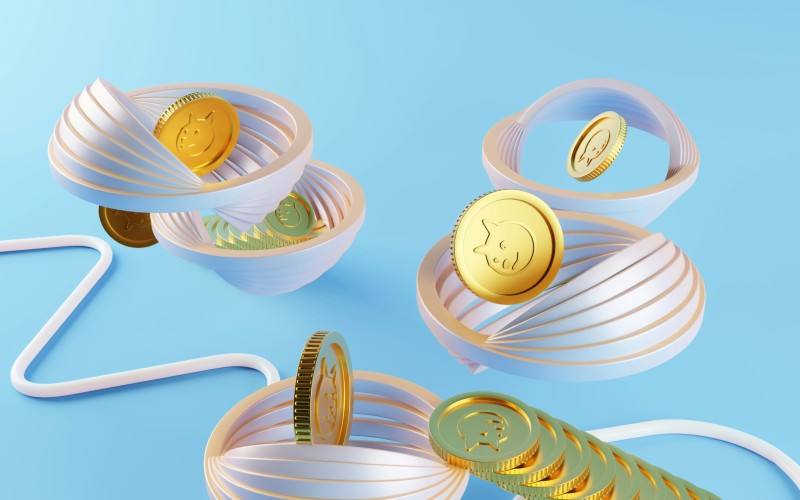In the early days of the internet, memes were little more than inside jokes passed around obscure forums. Today, they’ve become one of the most powerful forces shaping communication, community, and even product design, especially in Web3.
While crypto projects once focused primarily on utility or blockchain innovation, the new wave of decentralized platforms is increasingly built with meme culture at its core. Nowhere is this more apparent than in how user interfaces, branding decisions, and interaction models are evolving to meet an audience that craves humor, relatability, and maximalist aesthetics.
The Product Design Ripple Effect
This change isn’t isolated to niche coins. Even large-scale blockchain projects are borrowing from meme design frameworks to appeal to younger, social-first audiences. Wallet providers, staking platforms, and even analytics dashboards are rethinking how they present data, favoring graphics, animations, and pop-culture references over traditional charts and forms.
It’s a reflection of Web3’s new reality: people want to feel something when they interact with tech. They want laughter, confusion, even absurdity, anything but the sterile UX patterns of Web2. The line between meme and mechanic is disappearing.
The creators of $MAXI have leveraged meme tropes, like hyperbole, gym culture, and sci-fi drama, not just for hype, but to inform the visual structure of their token dashboard and roadmap layout. As a self-described “vibe utility” coin, $MAXI blends entertainment with functionality, offering staking, wallet integration, and presale access through a design that turns crypto maximalism into an interactive experience worth exploring firsthand.
From Joke to Framework
Meme coins like Dogecoin and Shiba Inu helped introduce millions to cryptocurrency by removing the intimidation factor. They used humor and simplicity to build viral followings. But what began as ironic tokens have since matured into platforms with real user bases, staking systems, and developer communities. This change is pushing Web3 product designers to treat memes not just as marketing tools, but as foundational design languages.
Instead of hiding behind slick, corporate minimalism, many of today’s new crypto interfaces lean into chaos. They embrace bright colors, exaggerated typography, emoji-laden prompts, and user flows that feel more like an arcade game than a finance dashboard. These aren’t just stylistic choices, they serve a purpose. They lower psychological barriers to entry, make users feel like they’re in on a joke, and encourage repeat interaction through entertainment.
UX for the Meme-First Generation
Designing for meme culture means recognizing that users expect more than functionality, they want a story, an aesthetic, and an emotional trigger. Product designers are adapting interfaces to reflect this, using gamified experiences and interactive roadmaps to keep users engaged. These tools build stickiness in a space where users can jump to the next trend at any moment.
Loading screens with jokes, buttons labeled with memespeak, and dashboards that pulse with motion aren’t frivolous add-ons, they’re part of a broader UX strategy that prioritizes personality. Even technical actions like staking or wallet linking are being wrapped in humor and flair to keep things approachable.
Turning Memes Into Mechanics
In traditional tech, UI design is about clarity and speed, whether it be websites or Fintech apps. But in meme-driven Web3 projects, delay is part of the drama. Countdown timers, random reward mechanics, and absurdly named tiers or loyalty badges all contribute to a feeling of immersion. It’s not just about moving tokens, it’s about entertaining users while they do it.
Some projects even structure their tokenomics around meme culture, using narrative devices like “pump cycles,” “hero arcs,” or “degenerate modes” to guide user behavior. These story-based layers encourage holders to stay engaged not because they’re waiting for a financial payoff, but because they feel like they’re part of a live, ever-evolving spectacle.
Why It Matters for the Future of Web3
This meme-first design philosophy is more than a gimmick, it may be the key to wider adoption. Crypto is notoriously complex, filled with jargon, volatile markets, and high learning curves. Meme culture softens that blow. It transforms intimidating interfaces into social experiences, turning the act of trading or staking into a digital performance.
For developers, embracing this trend can mean the difference between short-term attention and long-term engagement. For users, it creates a more enjoyable way to participate in emerging tech, without needing to understand every protocol or whitepaper.
Final Thoughts
As Web3 moves beyond the era of speculation and into one of usability, design choices will play a bigger role than ever before. Meme culture, often dismissed as fluff, has proven to be a powerful UX tool, one that aligns naturally with how modern users communicate and explore new technology. By adopting meme-first strategies, projects aren’t just making things funny, they’re making them usable, memorable, and ultimately more human. That may be the real utility behind the hype.


